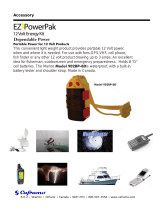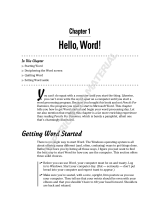
March 2003. Version 7. Professional, Medical, and Legal, Solution Series, Preferred, Standard, and Essentials editions.
This material may not include some last-minute technical changes and/or revisions to the software. Changes are periodically made to the
information provided here. Future versions of this material will incorporate these changes.
ScanSoft, Inc. has patents or pending patent applications covering the subject matter contained in this document. The furnishing of this
document does not give you any license to such patents. This software is protected under the following patents, among others: 5,027,406;
5,168,548 5,202,952; 5,231,670; 5,388,183; 5,428,707; 5,465,318; 5,526,463; 5,680,511; 5,715,367; 5,754,972; 5,765,132; 5,794,189; 5,799,279;
5,818,423; 5,822,730; 5,850,627; 5,890,181; 5,909,666; 5,915,236; 5,920,836; 5,920,837; 5,949,886; 5,960,394; 5,970,448; 5,970,460; 5,983,179;
6,029,124; 6,058,366; 6,064,959; 6,073,097; 6,088,671; 6,092,043; 6,092,044; 6,101,468; 6,125,342; 6,125,347; 6,138,098; 6,151,575; 6,163,768;
6,167,377; 6,212,498; 6,260,013; 6,292,779; 6,349,282; 6,424,943; and 6,456,972.
No part of this manual or software may be reproduced in any form or by any means, including, without limitation, electronic or mechanical,
such as photocopying or recording, or by any information storage and retrieval systems, without the express written consent of ScanSoft,
Inc. Specifications are subject to change without notice.
Copyright © 2002-2003 ScanSoft, Inc. All rights reserved.
ScanSoft, the ScanSoft logo, the Dragon logo, Dragon NaturallySpeaking, NaturallySpeaking, NaturallyMobile, RealSpeak, Nothing But
Speech (NBS), Natural Language Technology, Select-and-Say, MouseGrid, and Vocabulary Editor are registered trademarks or trademarks
of ScanSoft, Inc. in the United States or other countries. All other names and trademarks referenced herein are trademarks of ScanSoft or
their respective owners. Designations used by third-party manufacturers and sellers to distinguish their products may be claimed as
trademarks by those third-parties.
Pentium is a registered trademark of Intel Corporation.
Adobe and Acrobat are registered trademarks of Adobe Systems Incorporated.
Corel and WordPerfect are registered trademarks of Corel Corporation.
Lotus and Lotus Notes are registered trademarks of Lotus Development Corporation.
Microsoft, Outlook, Windows, Windows NT, Visual Basic, and PowerPoint are trademarks or registered trademarks of Microsoft
Corporation.
Voice It, the Voice It logo, and Voice It Link are trademarks or registered trademarks of VXI Corporation.
AMD is a trademark of Advanced Micro Devices, Inc.
Sound Blaster is a registered trademark of Creative Technology Ltd.
America Online is a registered trademark of America Online, Inc., a division of AOL Time Warner.
Sony and Memory Stick are regitered trademarks of the Sony Corporation
Panasonic is a registered trademark of the Matsushita Electric Industrial Co., Ltd
iPAQ is a registered trademark of the Hewlett-Packard Company
Dave Barry in Cyberspace, © Copyright 1996 by Dave Barry, published by Crown Publishers.
3001: The Final Odyssey, © Copyright 1997 by Arthur C. Clarke, published by HarperCollins Publishers.
Dogbert's Top Secret Management Handbook, © Copyright 1996 by United Feature Syndicate, Inc., published by
HarperBusiness, a division of HarperCollins Publishers.
Success Is a Journey: 7 Steps to Achieving Success in the Business of Life, © Copyright 1999 by Jeffrey J. Mayer, published by
McGraw Hill.
Charlie and the Great Glass Elevator, © Copyright 1972 by Roald Dahl, published by Alfred A. Knopf, Inc., and Penguin
Books.
The Captain of Battery Park, © Copyright 1978 by Eugene Pool, published by Addison-Wesley.
50-A11A-10053



























